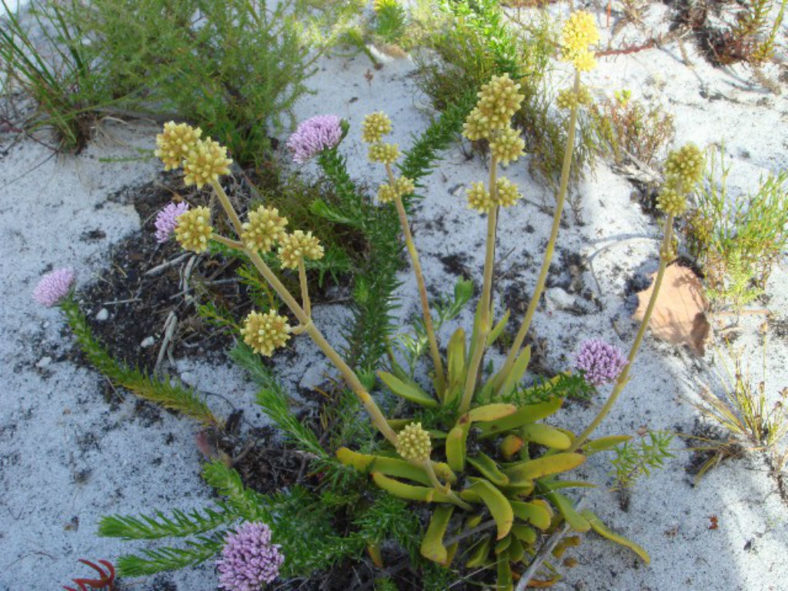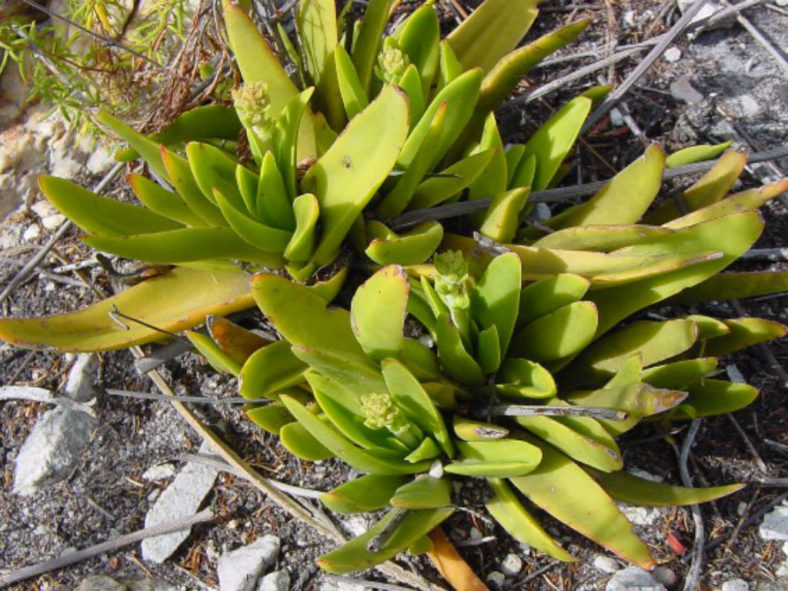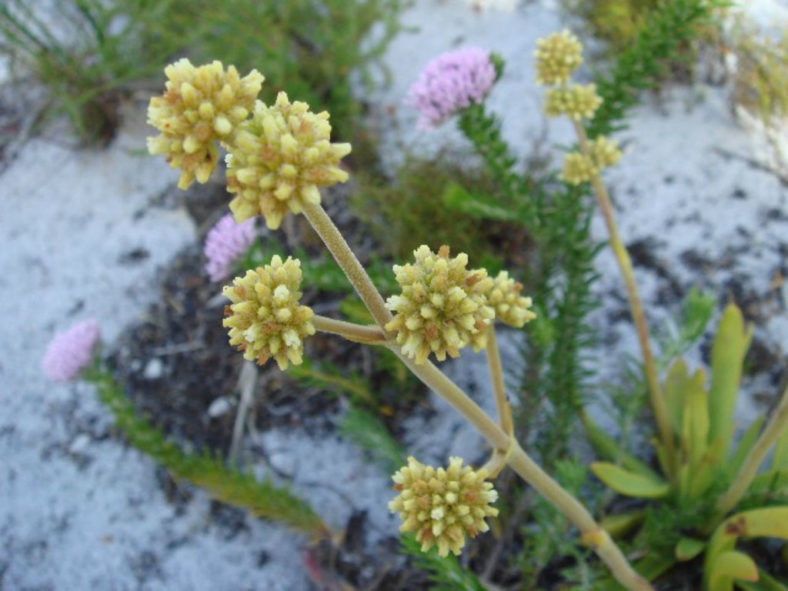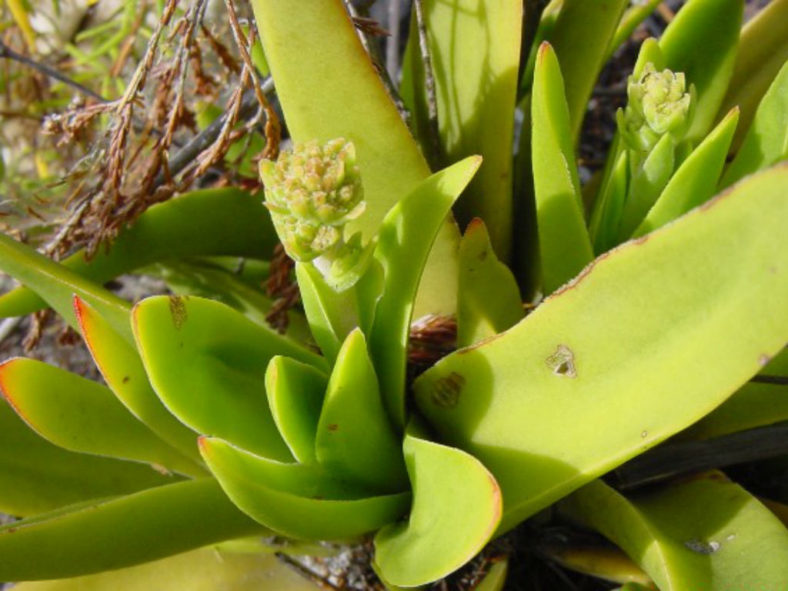Scientific Name
Crassula nudicaulis L.
Common Name(s)
Naked-stalked Crassula
Synonym(s)
Globulea nudicaulis
Scientific Classification
Family: Crassulaceae
Subfamily: Crassuloideae
Genus: Crassula
Etymology
The specific epithet "nudicaulis" (pronounced "new-dee-KAW-liss") means "bare-stemmed, with bare stems" and probably refers to the usually leafless inflorescences of this species.
Origin
Crassula nudicaulis is native to South Africa and Lesotho. It occurs from the Holgatrivier to the Cape Peninsula, from the Little Karoo to the Drakensberg, growing on exposed or sheltered gravelly slopes.
Description
Crassula nudicaulis is a low-growing succulent that usually forms several basal rosettes of green or yellowish-green to brown leaves. It is more or less branched, with fleshy to slightly woody branches. The leaves are slender, tapering to a point, flat or slightly convex at the upper surface, smooth or somewhat hairy, and with or without marginal cilia. They can grow up to 3.2 inches (8 cm) long and 0.6 inches (1.5 cm) wide. The old leaves remain attached to the branches.
The flowers are tubular to almost cylindrical, cream-colored, rarely white, and appear in dense clusters forming elongated panicles, usually in spring.
Crassula nudicaulis is variable, with several accepted varieties. In addition, the type variety has numerous forms distributed under different names.

Varieties of Crassula nudicaulis
- Crassula nudicaulis var. herrei
- Crassula nudicaulis var. nudicaulis
- Crassula nudicaulis var. platyphylla
Cultivars of Crassula nudicaulis
How to Grow and Care for Crassula nudicaulis
Hardiness: USDA hardiness zones 9a to 11b: from 20°F (-6.7°C) to 50°F (10°C).
Crassulas are easy to grow but susceptible to mealybugs and fungal diseases. Overwatering is sure to be fatal, as with all succulents, so err on the side of being too dry rather than too wet. Never let your plant sit in water. If you water from beneath by allowing the plant to sit in a saucer, pour off any excess water after a few minutes.
These succulents are generally started by division, offsets, or leaf cuttings. Crassulas can be easily propagated from a single leaf. Sprout leaves by placing them into a potting mix for succulents, then covering the dish until they sprout.
Repot as needed, preferably during the warm season. To repot your Crassula, ensure the soil is dry before repotting, then gently remove the pot. Knock away the old soil from the roots, removing any rotted or dead roots. Treat any cuts with a fungicide. Place the plant in its new pot and backfill it with potting soil, spreading the roots as you repot. Leave the plant dry for a week or so, then begin to water lightly to reduce the risk of root rot.
Learn more at How to Grow and Care for Crassula.
Links
- Back to genus Crassula
- Succupedia: Browse succulents by Scientific Name, Common Name, Genus, Family, USDA Hardiness Zone, Origin, or cacti by Genus
Photo Gallery
Click on a photo to see a larger version.


